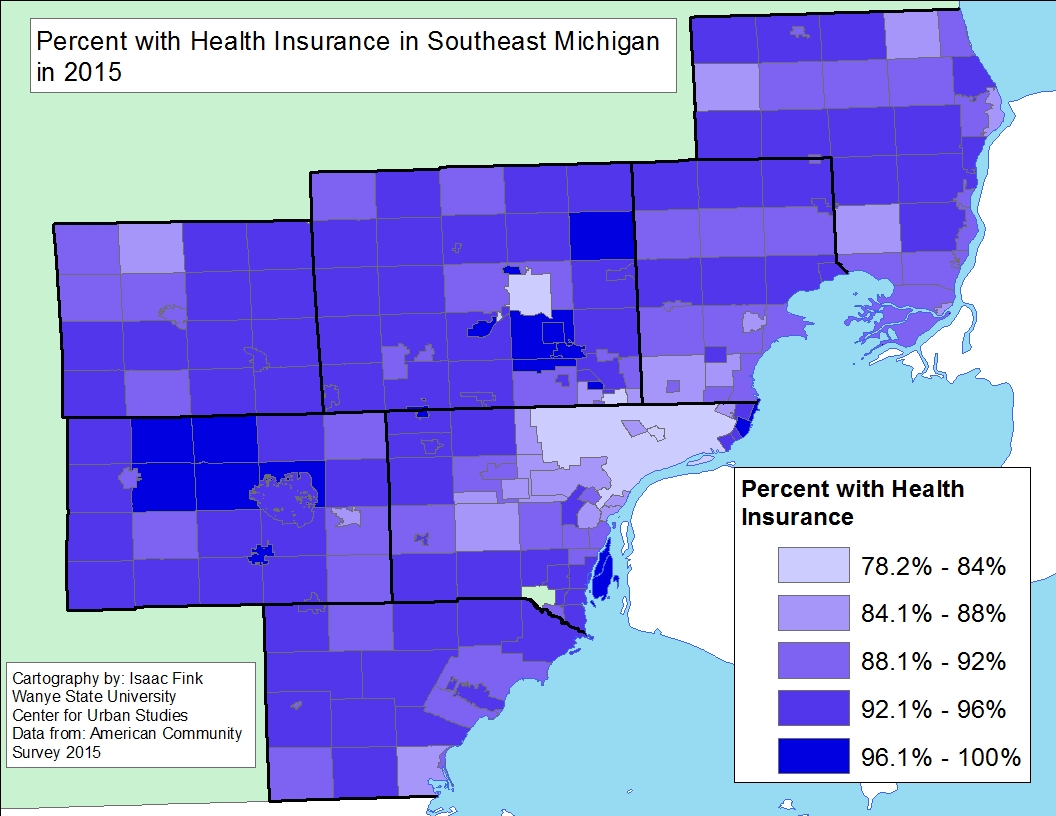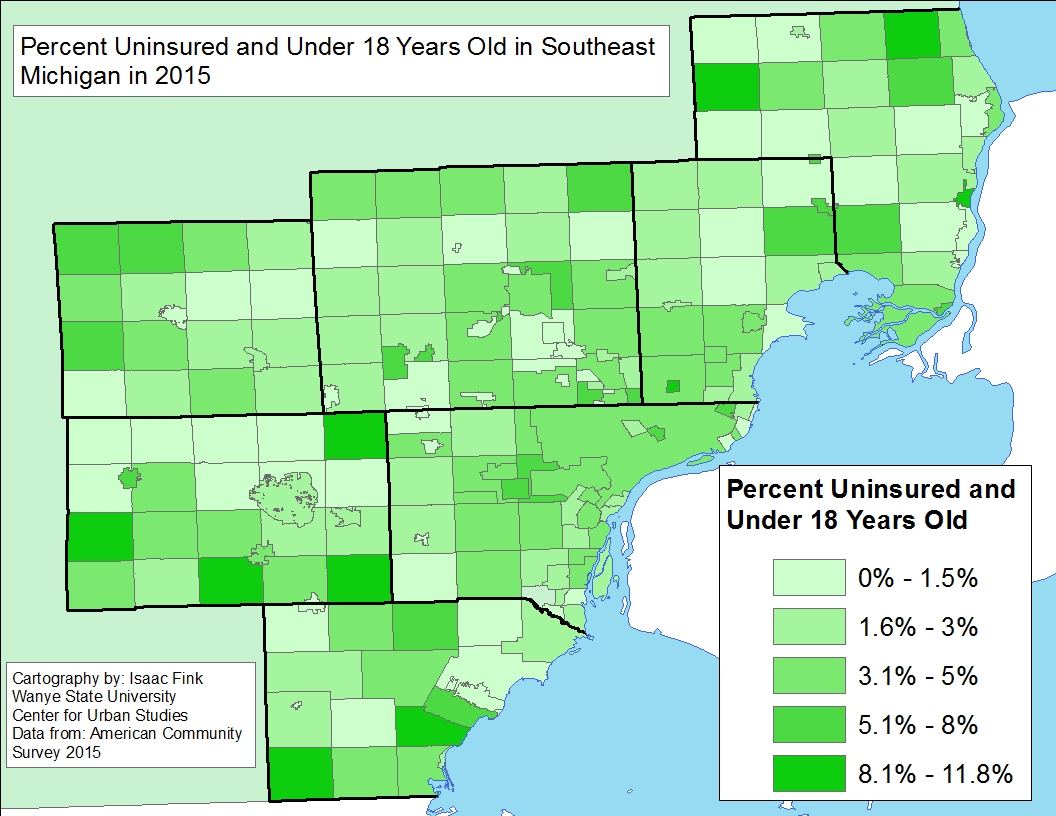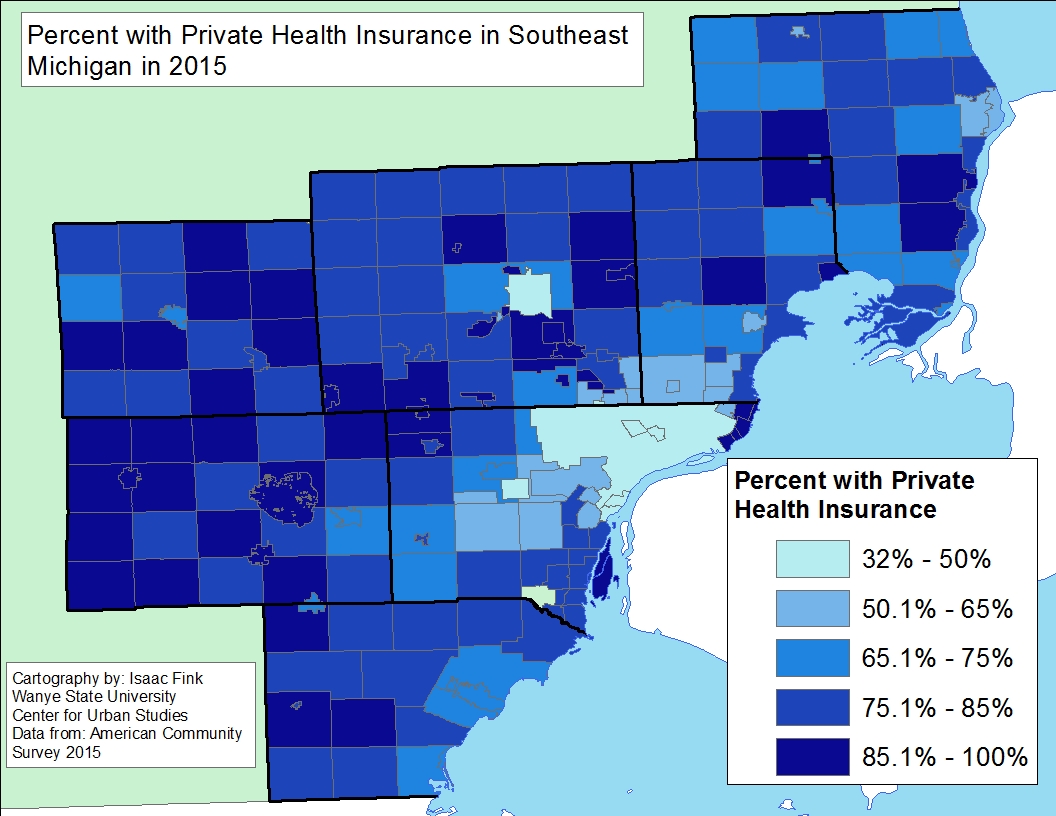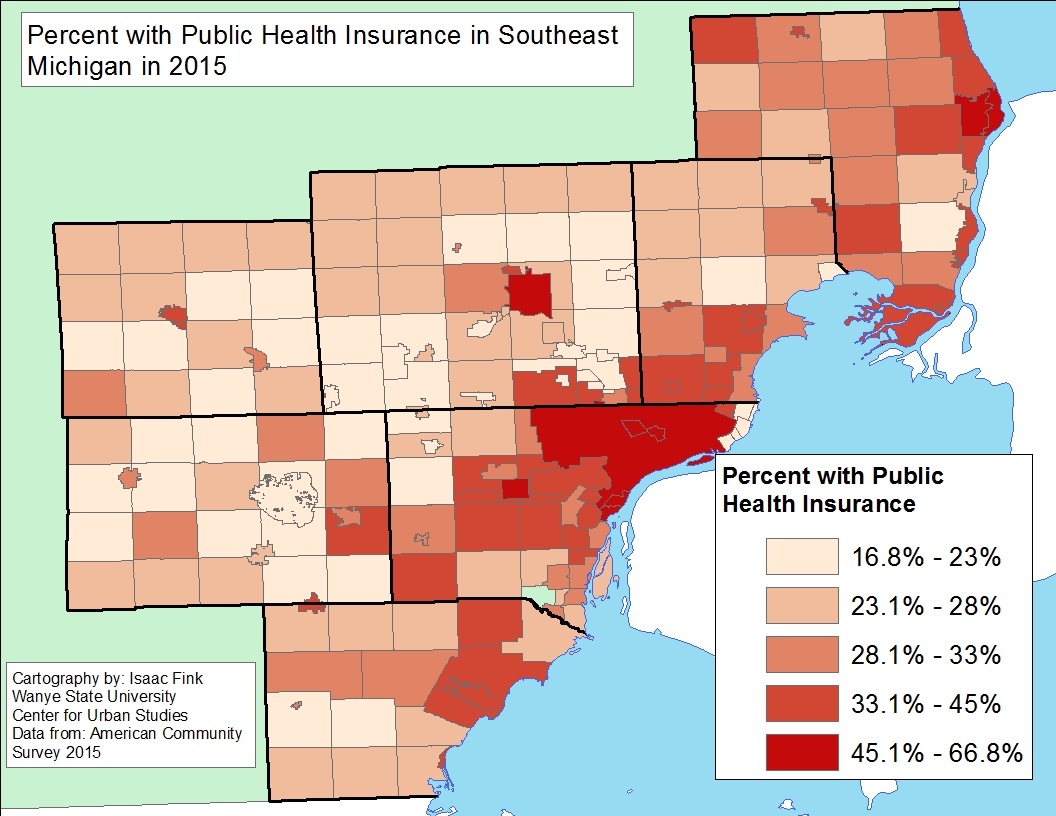In Michigan, majority of residents have a form of health care coverage, but the kind of coverage often varies. In Southeastern Michigan, the majority of the region has some type of private health care coverage, but there are several municipalities where majority of the residents depend upon public coverage. According to the Michigan Department of Health and Human Services there are several publicly funded medical assistance programs offered to residents, depending on their age, income, financial resources and other requirements. Public health insurance programs in Michigan include Medicaid, Healthy Michigan Plan and the Children’s Health Insurance Program.
For this post the percentage of residents covered by health insurance is examined, as is the percentage of residents with private or public insurance plans.
Throughout Southeastern Michigan health care coverage for residents ranges from 78 to 100 percent, with only about 15 municipalities having 96 percent or more of its residents having coverage, according to the American Community Survey conducted by the Census. Of these 15 municipalities, most are located in Oakland and Washtenaw counties. Overall, in Oakland County 92 percent of residents had health insurance coverage in 2015, and in Washtenaw County 94 percent of the population had coverage. In Oakland County Bloomfield Hills and Lake Angelus had the highest percentage of coverage at 99 percent, and in Washtenaw County, Dexter had the highest rate of coverage at 97 percent. At the opposite end Hamtramck had the lowest percentage of residents with coverage—77 percent. Put differently, 23 percent had no coverage. In Detroit about 17 percent of the population had no health insurance coverage in 2015.
Regionally, Livingston and Washtenaw counties had the highest percentages of residents on private health insurance at 83 and 82 percent. In Washtenaw County more than half of the municipalities had above 85 percent of its residents on private health insurance. In Wayne County, 58 percent of the residents had private health insurance and only a handful of communities (Grosse Ile, Northville Township and the Grosse Pointes) had more than 85 percent of its residents on private health insurance. On the opposite side of the spectrum, there were five communities in Wayne County where 50 percent or less of the population had private health insurance.
The map below somewhat mirrors the map above, showing the percentage of residents with public health insurance, as opposed to private. With cities like Detroit, Highland Park and Hamtramck having some of the lowest percentages of private health insurance, it should only make sense that they had among the highest percentages of residents with public health insurance. Highland Park had the highest percentage of residents on public health insurance at 62 percent; Ecorse followed with 60 percent of its residents on public health insurance. Detroit and Hamtramck each had 55 percent of their residents on public health insurance.
Clearly there is a major divide running through Southeastern Michigan on who gets health insurance and where it comes from. Generally higher income communities have more coverage and a higher proportion comes from the private sector. Lower income communities depend heavily on various public sector programs, and many residents still do not have health care coverage. Clearly these lower income citizens and communities would be severely harmed by proposals to cut public health care programs.



